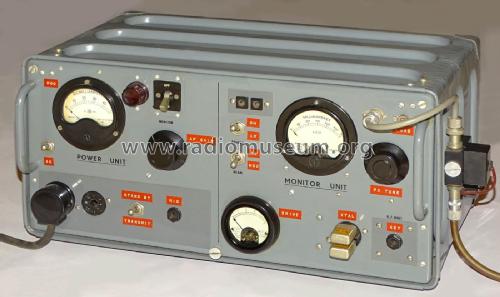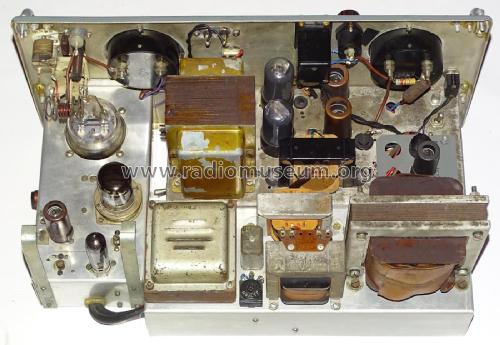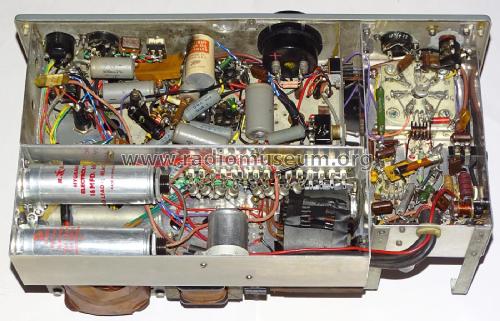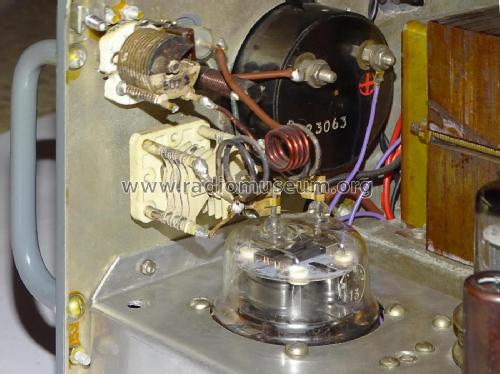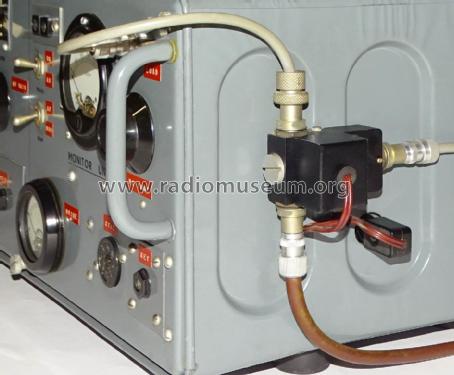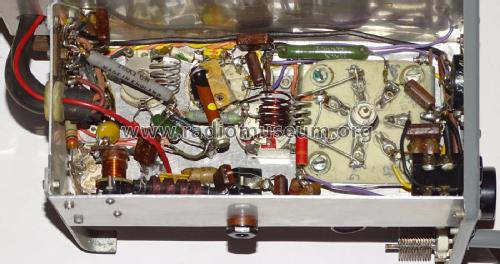144 MHz VHF field day transmitter.
Homebrew - ORIGINAL; GB
- Country
- Great Britain (UK)
- Manufacturer / Brand
- Homebrew - ORIGINAL; GB
- Year
- 1963
- Category
- Amateur Transmitter (only)
- Radiomuseum.org ID
- 305605
- Number of Tubes
- 8
- Main principle
- Transmitter
- Wave bands
- VHF incl. FM and/or UHF (see notes for details)
- Power type and voltage
- Alternating Current supply (AC) / 220-240 Volt
- Loudspeaker
- - - No sound reproduction output.
- Material
- Metal case
- from Radiomuseum.org
- Model: 144 MHz VHF field day transmitter. - Homebrew - ORIGINAL; GB
- Shape
- Tablemodel, with any shape - general.
- Dimensions (WHD)
- 485 x 220 x 270 mm / 19.1 x 8.7 x 10.6 inch
- Notes
-
In the post-war period government surplus electronic equipment was readily available, allowing impecunious young radio amateurs to construct transmitting equipment at little cost. This 144 MHz CW/AM transmitter was made by GM3NZI in 1963 for use during VHF field days, when it was operated from mountain summits (such as Green Lowther in Southern Scotland) for contest purposes.
With the exception of a few switches, sockets and Radiospares capacitors, the transmitter is constructed entirely from recuperated parts and housed in a rather sturdy metal case from a surplus "Monitor" instrument of unknown function. (It had front panel markings "Power", "Beam" and "RF Unit"). Three individual small chassis were combined for the power supply, AF and RF sections of the transmitter, which used transformers and chokes from old radio sets. Notice the Boots halibut liver oil recipient used for screening the microphone input jack!
As was typical practice at the time, the transmitter is crystal controlled and could use surplus FT243 crystals in 3rd overtone mode. (The operator would not expect a reply on his transmit frequency, and when calling CQ, he would send QLH or QHL to indicate whether he would be tuning the 2-metre band from low to high, or high to low, frequency). DX contest QSOs were normally made using CW, but an AM modulator was included for chat with less distant 2m stations. A low impedance output from the AF amplifier is also available for use in public address applications.
The transmitter incorporates relays for transmit/receive switching, and the Londex coaxial relay for antenna switching is mounted on the right side of the cabinet. The PA grid and anode current and modulator anode currents are metered, and the maximum power input to the 832A PA is 40W ICAS. The unit requires 220 - 240v AC power, which was furnished by a petrol generator during field days.
Valve complement:
6AM6 24 MHz overtone xtal oscillator.
A2134 Tripler/driver.
QV04-7 Doubler/driver.
832A 144 MHz Power amplifier.
12AX7 AF preamplifier.
12AU7 AF driver.
2 x 6V6GT Push-Pull modulator.
CV287 Voltage regulator.
- Net weight (2.2 lb = 1 kg)
- 17.8 kg / 39 lb 3.3 oz (39.207 lb)
- Author
- Model page created by Bruce Taylor. See "Data change" for further contributors.
- Other Models
-
Here you find 41 models, 19 with images and 7 with schematics for wireless sets etc. In French: TSF for Télégraphie sans fil.
All listed radios etc. from Homebrew - ORIGINAL; GB
Collections
The model 144 MHz VHF field day transmitter. is part of the collections of the following members.
